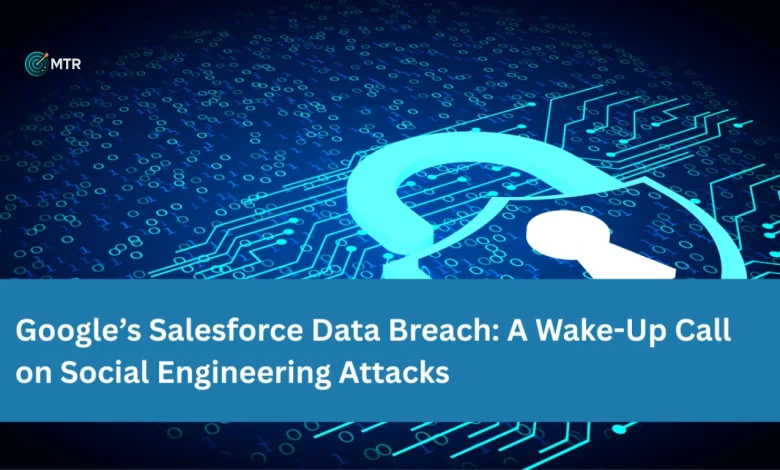Salesforce Data Breach: A Comprehensive Analysis of the Scattered LAPSUS$ Hunters’ Attack

The Gist
A significant data breach involving Salesforce has emerged, orchestrated by the Scattered LAPSUS$ Hunters group, who claim to have stolen nearly one billion records from various Salesforce customers. This breach has affected numerous high-profile companies, raising concerns over data security and the methods employed by the hackers.
Key Takeaways
- Scattered LAPSUS$ Hunters: The group behind the breach, linked to notorious hacking entities like Lapsus$ and ShinyHunters.
- Nearly 1 Billion Records: The hackers claim to have stolen almost one billion records from Salesforce customers.
- High-Profile Victims: Companies affected include Albertsons, Engie Resources, Fujifilm, GAP, Qantas, and Vietnam Airlines, among others.
- Method of Attack: The hackers used social engineering techniques, specifically “vishing” or voice phishing, to gain access to Salesforce customer data.
- Salesforce’s Response: Salesforce maintains that its systems were not directly compromised, stating, “There is no indication that the Salesforce platform has been compromised”.
- Data Leaked: Information includes names, email addresses, phone numbers, and loyalty program details.
- Legal Actions: Qantas obtained a court injunction to block access to the leaked data.
Salesforce: What Changes, What Doesn’t
The breach has highlighted vulnerabilities in cloud-based customer relationship management systems. Despite the massive data theft, Salesforce asserts that its platform was not directly compromised. The hackers exploited human error through social engineering, specifically “vishing,” to target Salesforce customers ,. This incident underscores the need for enhanced security measures and vigilance against such attacks.
Earnings Highlights & Guidance
While Salesforce has not publicly addressed the financial implications of the breach, the incident could potentially impact its market performance. The company’s security measures are under scrutiny, and investors will be keenly observing Salesforce’s upcoming earnings report for any signs of financial impact or shifts in customer trust.
Graduate Outcomes & Industry Ties
This breach emphasizes the critical role of cybersecurity education and training, especially for industries heavily reliant on cloud services. Affected companies like Qantas and Vietnam Airlines are collaborating with cybersecurity experts to analyze the leaks and mitigate further risks . This may lead to a reevaluation of industry ties and partnerships, particularly with third-party service providers, to bolster data protection protocols.
Manufacturing & Distribution
The breach has significant implications for the manufacturing and distribution sectors, with companies like Fujifilm and Toyota among those affected . These sectors depend on Salesforce for customer relationship management and supply chain operations. The breach could disrupt operations, potentially causing delays in manufacturing and distribution as companies work to secure their data and systems.
Transfer Market & Contracts
The breach could influence the transfer market and contractual agreements between Salesforce and its clients. Companies might seek to renegotiate terms to include stricter data protection clauses or consider alternative CRM providers. This incident highlights the necessity for robust contractual agreements that address data security and liability in the event of a breach.
Compute, Data, and Cost Curves
The breach raises questions about the cost-effectiveness of cloud-based solutions versus the risks they pose. While cloud services like Salesforce offer scalability and efficiency, the potential costs associated with data breaches—both financial and reputational—can be substantial. Companies must carefully weigh these factors when deciding on their data management strategies.
Risks, Catalysts & Outlook
The primary risk for Salesforce and its customers is the potential for further data breaches if security measures are not enhanced. However, this incident could also serve as a catalyst for improved cybersecurity practices across industries. Salesforce has issued advisories encouraging customers to adopt multi-factor authentication and remain vigilant against phishing attacks . The outlook for Salesforce will depend on its ability to restore customer confidence and demonstrate effective data safeguarding.
Mini Timeline
- May 2025: Adidas reports unauthorized access to consumer data through a third-party service provider.
- June 2025: Google security researchers warn of a hacking campaign targeting Salesforce customers.
- August 2025: Google identifies compromised OAuth tokens related to Salesforce integrations.
- October 3, 2025: Scattered LAPSUS$ Hunters claim to have stolen nearly one billion records from Salesforce customers.
- October 8, 2025: The breach is publicly reported, highlighting the extent of the data theft.
- October 13, 2025: Qantas confirms it is analyzing the data leak with cybersecurity experts.
FAQ
Q: Was Salesforce directly hacked?
A: No, Salesforce claims its systems were not directly compromised. The hackers targeted Salesforce customers using social engineering techniques.
Q: Which companies were affected by the breach?
A: Companies such as Albertsons, Engie Resources, Fujifilm, GAP, Qantas, and Vietnam Airlines were among those affected.
Q: What data was stolen?
A: The stolen data includes personally identifiable information such as names, email addresses, phone numbers, and loyalty program details.
Q: How did the hackers gain access?
A: The hackers used “vishing” to impersonate IT support personnel and trick employees into granting access.
Sources
- securityweek.com
- reuters.com
- fortra.com




